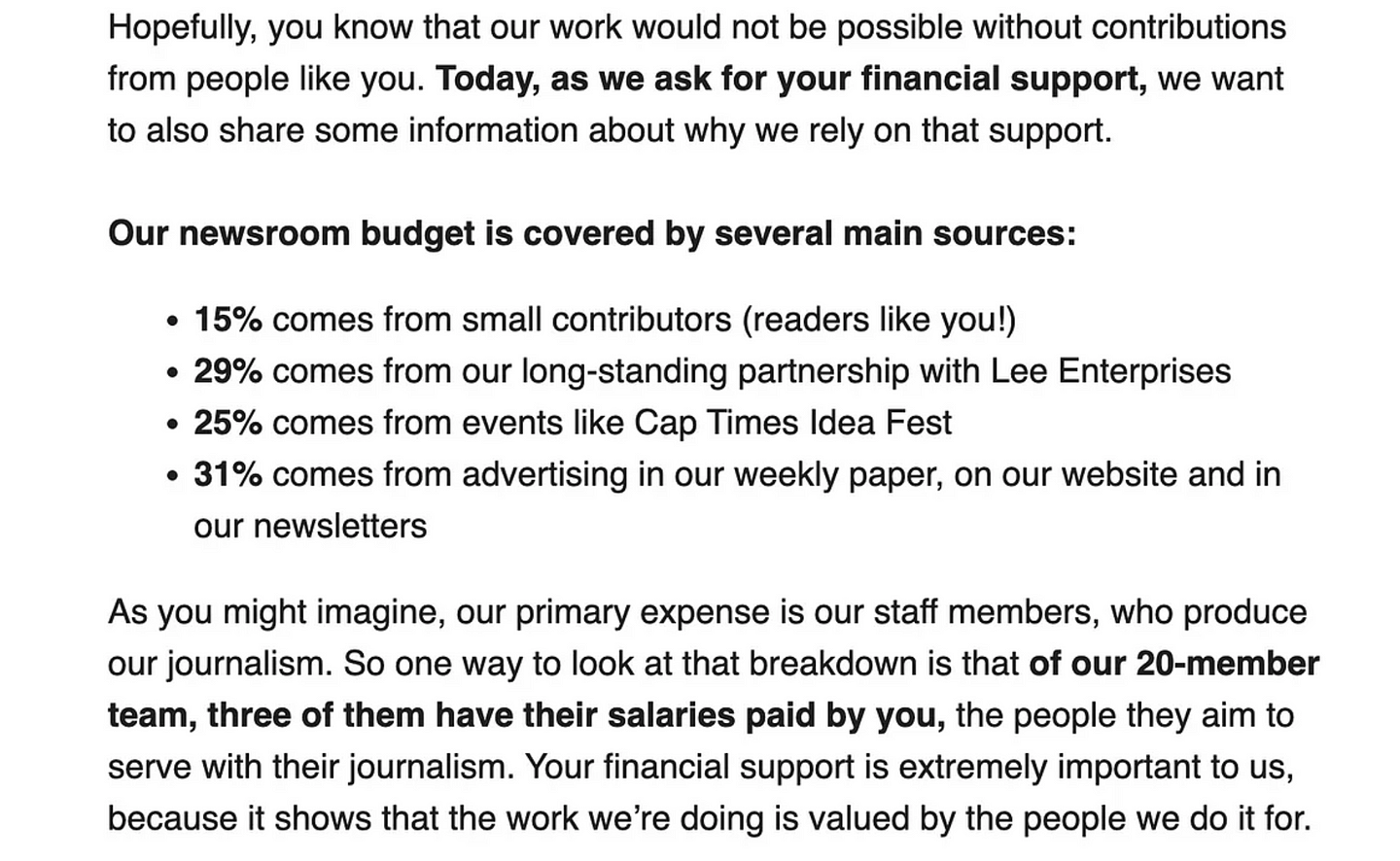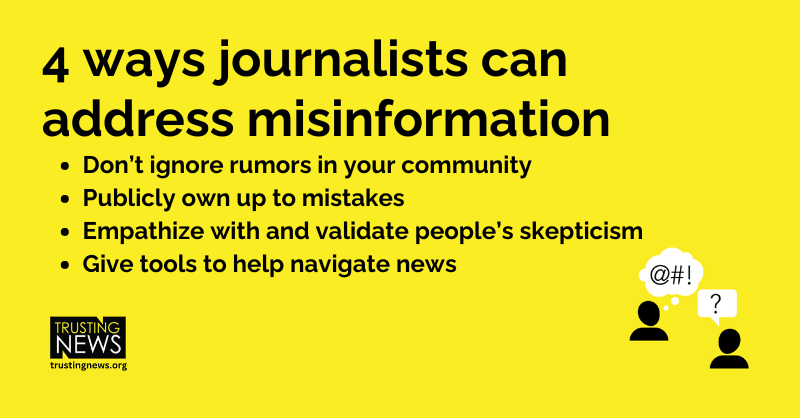
Recent research released by Pew confirms that many people do not understand the financial crisis that local news is in. The survey found that most adults (63%) think their local news outlets are doing “very well or somewhat well” financially. This, of course, is far from our reality as journalists. (We all remember the bleak […]
Talk about your shrinking staff
Recent research released by Pew confirms that many people do not understand the financial crisis that local news is in. The survey found that most adults (63%) think their local news outlets are doing “very well or somewhat well” financially.
This, of course, is far from our reality as journalists. (We all remember the bleak headlines about the mass number of journalists being laid off in January.)
This mismatch of perceptions between journalists and the public is nothing new, though. I saw it in action recently when the local newspaper in my area had major cuts. A handful of my friends and other community members shared the news about the layoffs, and their posts included negative assumptions about what the layoffs signaled and how little the remaining journalists must care about the community.
Of course, all the journalists I knew in the newsroom were devastated by the layoffs and were genuinely concerned about how they’d still effectively cover the community with fewer resources.
At Trusting News, we often talk about this disconnect between the public’s perception and our reality as journalists. It’s why we so often preach the importance of journalists increasing transparency around your ethics, coverage goals and processes.
But just as important is getting transparent around the harder, sometimes uncomfortable topics … like our finances and dwindling resources.
Here are some ideas and examples of how newsrooms have done this.
Acknowledge when layoffs happen
We know this can be tricky, especially if you’re owned by a corporation or company that may not want you to discuss layoffs publicly. But as we see time and time again, the public notices when our coverage shifts or shrinks, and if we’re not explaining it, they’ll make all sorts of assumptions.
If you’re in leadership in the newsroom, we highly encourage you to publicly acknowledge staff changes and layoffs, like how Sonal Shah at the Texas Tribune did after the organization had layoffs last year. Even if people aren’t happy with the decision or explanation, it’s better to get on the record about it than stay silent. It’s better to share your story than to let people make up their own versions.
If you feel unable to talk about layoffs specifically, then get specific about what you are and aren’t covering, and when that’s shifting. If you’re eliminating beats or consolidating coverage, make sure to explain that to your audience. (We have more strategies and help on how you can do that in our Explain What You Cover Trust Kit.)
Get clear about staff capacity
A few years ago, we partnered with station WCPO to test what would happen if they invited viewers into their morning meetings.
One of the things we found was that when people got a glimpse into how decisions were made at the station, they had a more favorable view of the news outlet. Specifically, viewers expressed being surprised by the number of story ideas the newsroom had to choose from. They didn’t realize journalists made careful decisions about which stories to cover based on their limited number of staffers.
Think about how you can help give people a window into what the decision process and staff capacity look like for your newsroom. Even if you can’t invite people into content planning meetings, you could share this information on social media, or in a newsletter: We talked about X story ideas during today’s morning meeting and ultimately sent out five reporters out to cover xyz. Then, invite the public to weigh in on which stories and topics they think are most important to cover.
(If you’re a reporter, you could do this regularly on social media, sharing how many stories ideas you’d love to tackle but which ones you’re prioritizing and why!)
Explain your finances
Some newsrooms may feel limited in terms of what sort of staff and financial information they can share, especially if corporately owned. But there are so many ways newsrooms can be upfront and tell a different story about how their individual newsroom operates.
We love this example from The Coloradoan so much, we share it often even though it’s a few years old. In subscription asks, the newsroom shared how many subscribers they’d need to sustain their staff of local journalists, and gave a basic breakdown of how much money came in from advertising and how much came from subscriptions.
Just like how we likely don’t understand the ins and outs of other industries’ finances, people don’t understand how news organizations are founded or work, or, like we mentioned up top, that news organizations are facing any sort of financial hardship.
We encourage newsrooms to get really clear about funding — talking about who financially backs your organization and how that does (or doesn’t) influence coverage.
If you’re able to really pull back the curtain, you can break down what percentage of your budget comes from each revenue source. Our work last year with the News Revenue Hub produced fantastic examples of funding transparency in newsletters, including this one from the Cap Times in Madison.

For more examples and strategies of how other newsrooms have done this, check out this post about how to talk about how your funding influences your coverage.
At Trusting News, we learn how people decide what news to trust and turn that knowledge into actionable strategies for journalists. We train and empower journalists to take responsibility for demonstrating credibility and actively earning trust through transparency and engagement. Subscribe to our Trust Tips newsletter. Follow us on Twitter and Facebook. Read more about our work at TrustingNews.org.

Project manager Mollie Muchna (she/her) has spent the last 10 years working in audience and engagement journalism in local newsrooms across the Southwest. She lives in Tucson, Arizona, where she is also an adjunct professor at the University of Arizona’s School of Journalism. She can be reached at mollie@trustingnews.org and on Twitter @molliemuchna.





